Bald eagles no longer ‘endangered’ in New Jersey, but not everyone’s celebrating
America’s bird: Amid fanfare for a rare piece of good environmental news, some watchdogs call the status change ‘devastatingly foolish.’
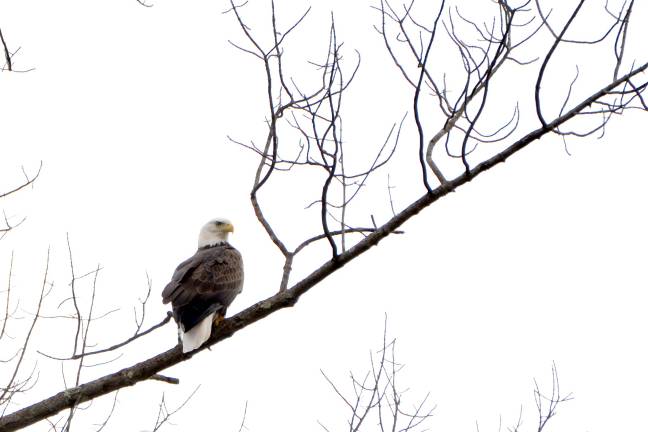
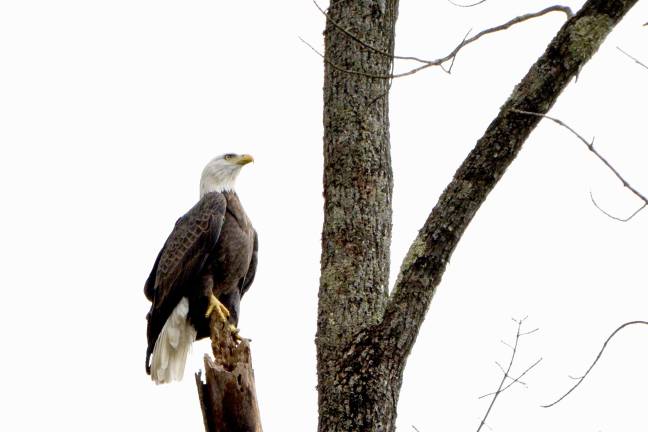
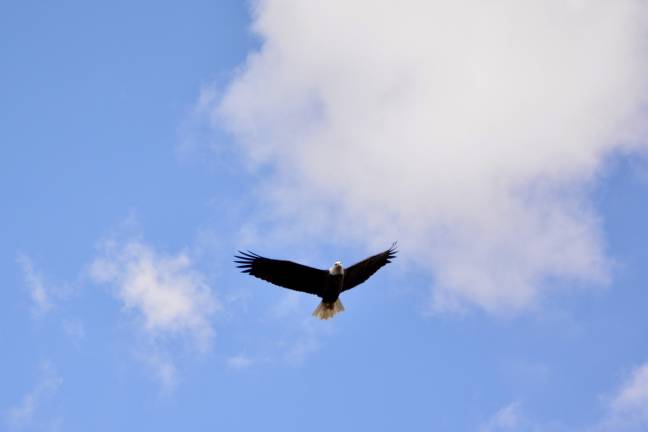

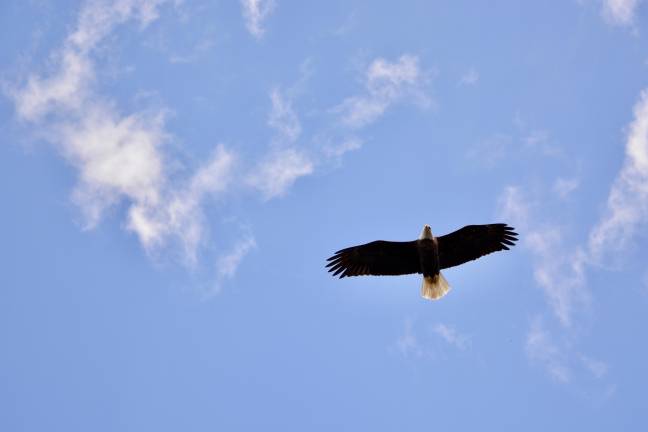
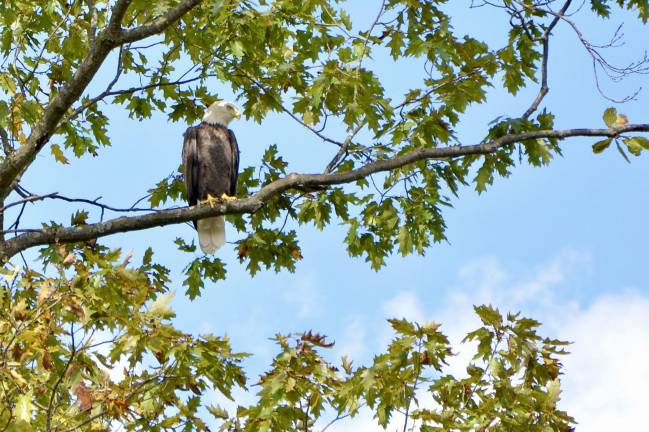
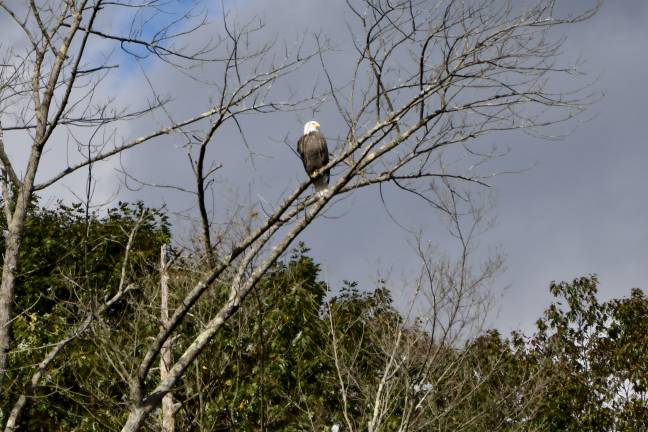
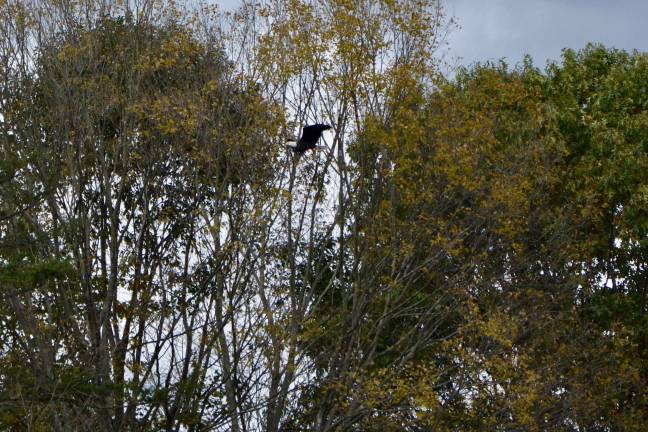
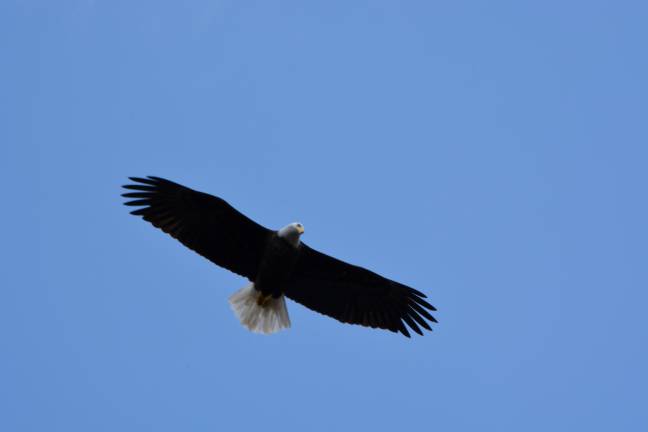
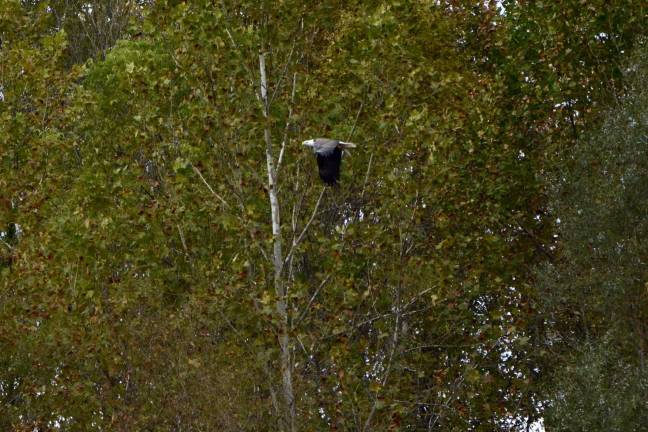
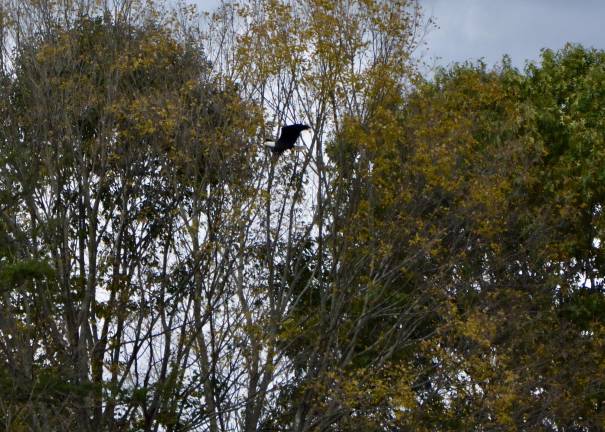
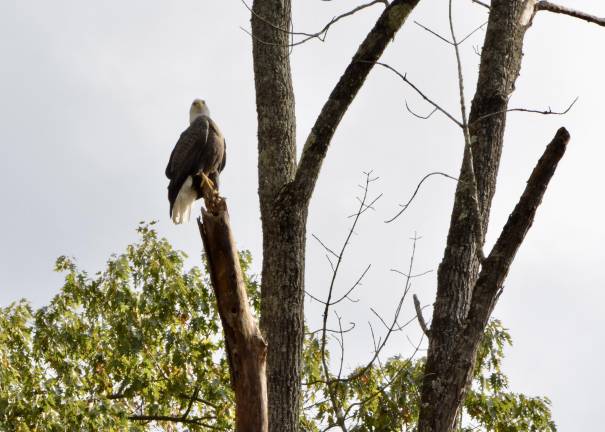
The day New Jersey removed bald eagles from the state’s endangered species list, David Blauvelt of Hamburg, N.J., spotted one on his way home from work. The adult raptor, unmistakable with its dramatic white head, was perched atop a dead deer on National Wildlife Refuge land in Wantage on Jan. 6.
The sighting felt like “a powerful reminder of the beauty and resilience of our wildlife and the importance of preserving it for generations to come,” said Blauvelt, who teaches art at Vernon Township High School. “The timing was just kind of eerie. It gave me chills in a way.”
An avid kayaker and fisherman, Blauvelt has been spotting bald eagles regularly since the very day he and his wife moved to Hamburg in 2018; he’d rarely seen them before. Once, fishing from his kayak on the Wallkill River, a bald eagle swooped down and tried to grab a bass Blauvelt was reeling in, then came back for a second pass and snagged the fish after Blauvelt released it. He managed to grab his camera and get some photos as the eagle flew off, fish in talons.
The bald eagle’s delisting – one of 100 changes announced by the DEP in January – came a fortnight after the raptor was designated America’s bird by presidential decree on Christmas Eve.
Indigenous only to North America, with a wingspan of seven feet or more, a body weight often exceeding 12 pounds, the ability to fly at an altitude of 10,000 feet and now a triumphant story of back-from-the-brink recovery, it has long been our nation’s unofficial mascot.
Blauvelt, like many, welcomed the news that “this magnificent creature” is no longer considered endangered in his home state. But some watchdogs say the move is premature, risking reversing the hard-won progress of the last 40 years.
The bald eagle’s status upgrade is a “devastatingly foolish decision by the State of New Jersey,” said Delaware Riverkeeper Maya van Rossum. “This quick rip-away of protections after we have just started to bring the populations back to healthy levels, I think it’s just stupid.”
More than 100 people – including representatives of Sierra Club N.J., The Wildlife Education and Conservation Center and two members of the N.J. Department of Environmental Protection’s own advisory committe – expressed similar concerns in comments to the DEP, arguing that bald eagles face myriad threats and are not yet out of the woods.
Back from the brink
Once so prevalent farmers considered it a nuisance, the bald eagle’s return is being heralded just about everywhere as an unmitigated triumph (though perhaps less so in parts of Alaska, where the raptors occasionally attack humans).
New Jersey’s bald eagle population has rebounded from a single nest a half-century ago to 293 nesting pairs in 2024 and is out of jeopardy, according to the New Jersey Department of Environmental Protection. The Garden State now considers the bald eagle a species of “special concern,” alongside barn owls, red-headed woodpeckers and monarch butterflies.
“It’s a highly positive success story,” said Jack Padalino, president emeritus of the Pocono Environmental Education Center, who has been leading eagle watches in New Jersey and Pennsylvania for 57 years. Padalino sees “no downside at all” to the status change.
“The significant danger to the bald eagle is the crazies that shoot ‘em, or they get hit by vehicular traffic,” he said – both threats that are unaffected by their recategorization.
“They used to be rare up by me, now they’re basically the seagull of West Milford and it’s wonderful,” said a Reddit commenter in a thread about the bald eagle’s status change.
Ed Connor, of Stillwater, N.J., saw at least 10 bald eagles in 15 minutes over the lake where he lives on a January morning. “This is how crazy it’s getting with the eagles... After seeing at least 10 eagles now I just went out and see this one, eating a fish right down by the fishing hole and as I’m taking a shot of that, I hear a splash right behind me and see another eagle grab a fish and fly off,” he posted on Facebook, along with a photo of a dark-headed juvenile bald eagle devouring a fish.
The osprey, or “fish hawk” – another impressive fish-eating raptor with a wingspan of up to six feet – was also upgraded in New Jersey to stable condition, after biologists documented a record 800 occupied osprey nests in the state in 2023. Unlike bald eagles, ospreys typically migrate south in winter and return in late March and early April to nest.
Both bald eagles and ospreys were nearly wiped out by widespread use of the pesticide DDT starting in the 1940s, which weakened eggshells to the point where they couldn’t withstand incubation.
Bald eagles are still considered threatened in New York, upgraded from endangered in 1999; ospreys are one step up, considered a species of special concern.
Bald eagles and ospreys were both promoted from threatened to protected in Pennsylvania in 2014 and 2017, respectively. New Jersey had only 50 remaining osprey nests by 1974, down from 500. In Pennsylvania, ospreys were declared locally extinct in 1979; the next year, an East Stroudsburg University professor began reintroducing fledglings from the Chesapeake Bay to sites in northeastern Pennsylvania, and in 1985, the state documented its first nesting pair since 1910.
Remaining protections
Though bald eagles were delisted as endangered in the lower 48 states in 2007, the raptors and their nests still have federal protections, and killing one – even by accident – carries up to a $100,000 fine and potential jail time.
Many of the standard protections for eagles are federal and remain in effect, said Larry Hajna, DEP press director. Federal guidelines include seasonal restrictions on a wide range of activities in proximity to nest sites, like fireworks or outdoor concerts. “While the Guidelines are voluntary, if they are ignored and eagle loss or abandonment occurs, there could be prosecution under the Bald & Golden Eagle Protection Act,” said Hajna.
Eagle nests are still generally protected by a 660-foot buffer zone from disturbances like new construction, thanks to the federal Bald and Golden Eagle Protection Act, said Rutgers ecology professor Richard Lathrop.
“In terms of the nest sites themselves, I don’t see much change there,” Lathrop said. Some New Jersey wetlands that eagles use as foraging grounds, however, could now have a narrower protective buffer, he added.
The DEP, with help from a corps of 150 volunteer nest-watchers, says it’s “committed to rigorous post-delisting monitoring of the bald eagle population to maintain the current level of detailed information on location, occupancy, and success of the nesting population,” enabling it to mitigate threats as they arise. (The state might hypothetically decide to vaccinate eaglets against bird flu if it became necessary, Lathrop explained, though there’s no active effort underway.)
That’s more scrutiny than bald eagles get across the river. “Pennsylvania doesn’t even count the nests anymore, it’s just been so successful a comeback,” said Padalino.
Another threat on the horizon
Spraying DDT on farm fields may be a thing of the past, but there’s no shortage of modern-day menaces to birds of prey, whose position on the top of the food chain has its pros and cons.
Threats run the gamut from obvious ones like habitat loss to development, to invisible ones like electrocution on power lines and chronic poisoning – whether from scavenging deer carcasses containing lead shot; from eating rodents killed by rat poison; or from exposure to “forever” chemicals like PFAs.
“Habitat destruction of these species continues unabated,” wrote Greg Westfall, a former village mayor who oversees a watershed association in central New Jersey, in a letter to the DEP. Thanks to the “warehouse construction boom and associated infrastructure development,” he wrote, “every county now has American Bald Eagle nests but every county also has many warehouses covering their habitat and foraging areas.”
The newest worry is eagles’ susceptibility to bird flu. Likely picked up from eating waterfowl, it has been found in eight dead eagles in New Jersey. It’s not clear, however, whether it was bird flu that killed them, said Lathrop, who chairs the DEP’s Endangered and Nongame Species Committee.
Lathrop initially gave his blessing to the proposed delisting, but changed his mind based on new information received at the eleventh hour about the toll that bird flu was taking on New Jersey’s bald eagles.
“The concern was just as we were about to delist them, then we started hearing about HPAI (bird flu), and it was like, ‘Oh my gosh, here’s another potential threat on the horizon,’” said Lathrop, reached on the phone in January.
Lathrop wrote to the DEP in July, not as the chair of their advisory committee but as a private citizen, urging them to defer removing the bald eagle from the endangered list. So did his fellow member of the Endangered and Nongame Species Committee, Russ Furnari, a retired manager of environmental policy at a New Jersey electric utility.
It was too late.
In its final rule adoption the DEP said it “recognizes that HPAI is a concern for raptors – Eagles and Peregrine Falcons in particular. However, there has been no evidence of widespread or localized HPAI effects in terms of the number of active nests or nest success and productivity in New Jersey Eagles.”
Padalino, reached the day after leading his group’s first eagle watch of the season, agrees. “I don’t think it’s a significant danger to the bald eagle,” he said of bird flu.
Newly endangered
Bald eagles stole the headlines, but New Jersey also saw the addition of 30 species to the endangered list this year: one bee, 11 butterflies, four fish, three reptiles, seven birds and four types of bat.
“They only just listed in New Jersey the Atlantic sturgeon, for criminy’s sake,” said van Rossum. “The Atlantic sturgeon of the Delaware River is a genetically unique population that is the most imperiled population of Atlantic sturgeon in the world. They were listed as federally endangered back in 2012 and New Jersey is only now deciding to list them within the state?
“We’re quick to strip away protection, we’re slow to provide protection,” van Rossum added. “I think that that disregard of the ramifications of our actions and activities on the aquatic life, on the bird life, on the wildlife that we share this space with is just one of the fundamental failures of our legal system.”
“This quick rip-away of protections after we have just started to bring the populations back to healthy levels, I think it’s just stupid.” - Maya van Rossum, Delaware Riverkeeper